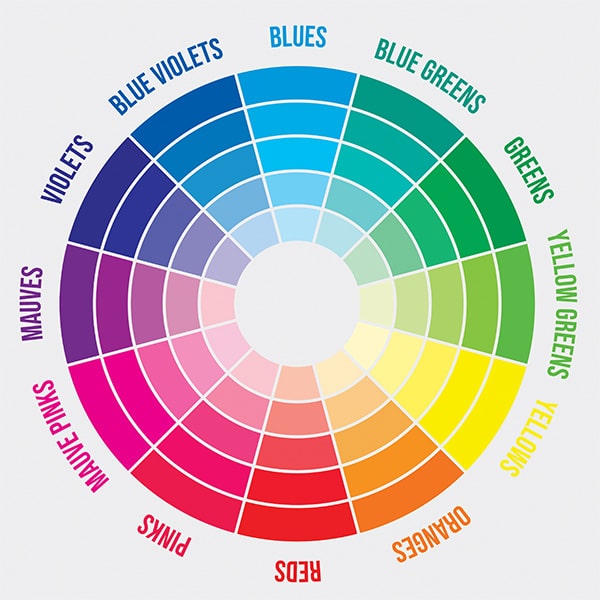At APMG Painting, we understand that choosing the right colours for your home can be both exciting and overwhelming. Understanding the colour wheel is essential for effectively using a paint colour chart. The colour wheel showcases primary, secondary, and tertiary colours, providing a foundation for creating harmonious colour schemes in your home. By grasping basic colour theory and harmony concepts, you can confidently select the perfect palette for each room.
Colour Theory Explained
The colour wheel is built on three primary colours: Yellow, Blue, and Red. Secondary colours are created by mixing two primary colours, while tertiary colours are formed by combining a primary colour with an adjacent secondary colour. This understanding forms the basis for more complex colour relationships.

Colour Harmony Concepts
Colour harmony is about creating appealing arrangements that are pleasing to the eye. There are several approaches to achieve this:
- Contrasting Colours: Match deep colours with lighter ones for visual interest.
- Complementary Colours: Use colours opposite each other on the wheel for vibrant combinations.
- Split Complementary: A softer version using a base colour and two adjacent to its complement.
- Monochromatic: Variations of a single colour for a cohesive look.
- Triadic: Three equally spaced colours on the wheel for a harmonious range.
Applying Colour Theory to Home Painting
- Kitchens: The kitchen’s colour scheme can significantly impact its atmosphere. Choose exciting colours for creative cooking or cool tones for a calming environment, ensuring they match other elements like flooring and backsplash.
- Bathrooms: Keep bathroom colours simple to prevent visual clutter in these intimate spaces. Blues and greens are popular choices, or consider a two-tone approach for visual interest.
- Hallways: Hallways set the tone for your home and should provide continuity to your overall colour scheme. Use lighter shades to make the space appear longer, or warm shades on the end wall to make it appear shorter.
- Doors: Door colours can significantly impact your home’s overall look. For a cohesive appearance, match door colours to trim or walls, or make a bold statement with contrasting colours.
Using Colour Groups
Paint manufacturers often group their colours into collections to make selection easier. These colour groups are carefully curated to work well together, taking the guesswork out of colour coordination. For example, Haymes Paint offers a ‘heritage’ palette that showcases a range of classic, timeless colours perfect for period homes or those seeking a traditional look.
When using these colour groups:
- Choose a main colour for the largest surfaces (like walls)
- Select accent colours from the same group for smaller areas or details
- Use the darkest or boldest colour sparingly for maximum impact
Practical Tips for Using Paint Colour Charts
When selecting colours, consider the lighting in your space. Natural and artificial light can significantly affect how a colour appears. Use sample pots to paint large swatches and observe them at different times of day. Think about the function of each room and how colours might influence mood and atmosphere.
Consider the flow between adjacent rooms to ensure a cohesive look throughout your home. Don’t forget about the ceiling – it can add colour or create illusions of height. Most importantly, trust your instincts and choose colours that you love and feel comfortable with.
To Summarise
Understanding how to use a paint colour chart is key to creating a beautiful, harmonious home. By grasping the basics of colour theory and applying them to your specific spaces, you can create a home that not only looks fantastic but also feels exactly right for you and your family.
Contact APMG Painting for help you every step of the way. Our team of experienced professionals can guide you through the colour selection process, ensuring that your vision for your home becomes a reality. With our expertise and attention to detail, we can transform your space with the perfect palette of colours.










